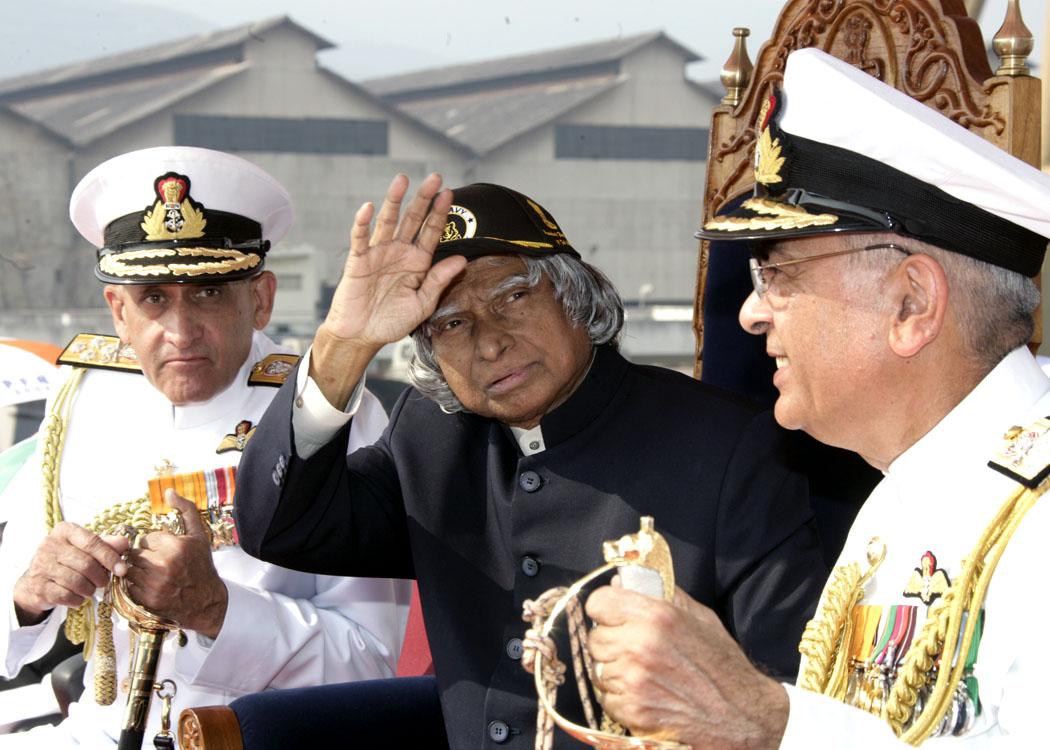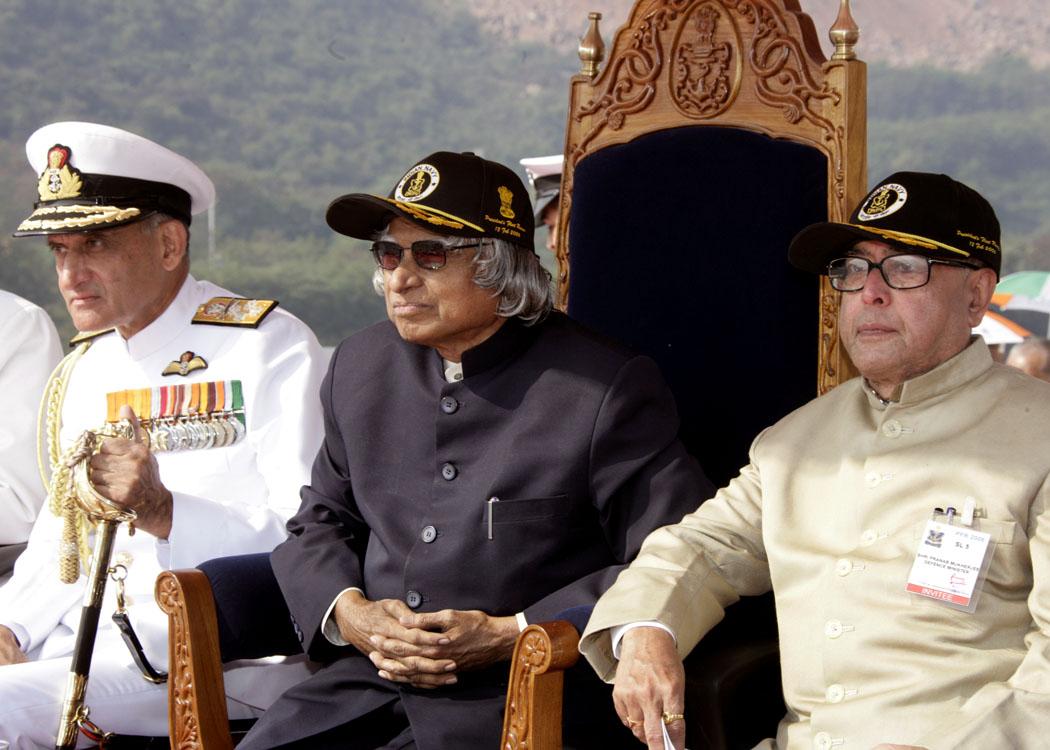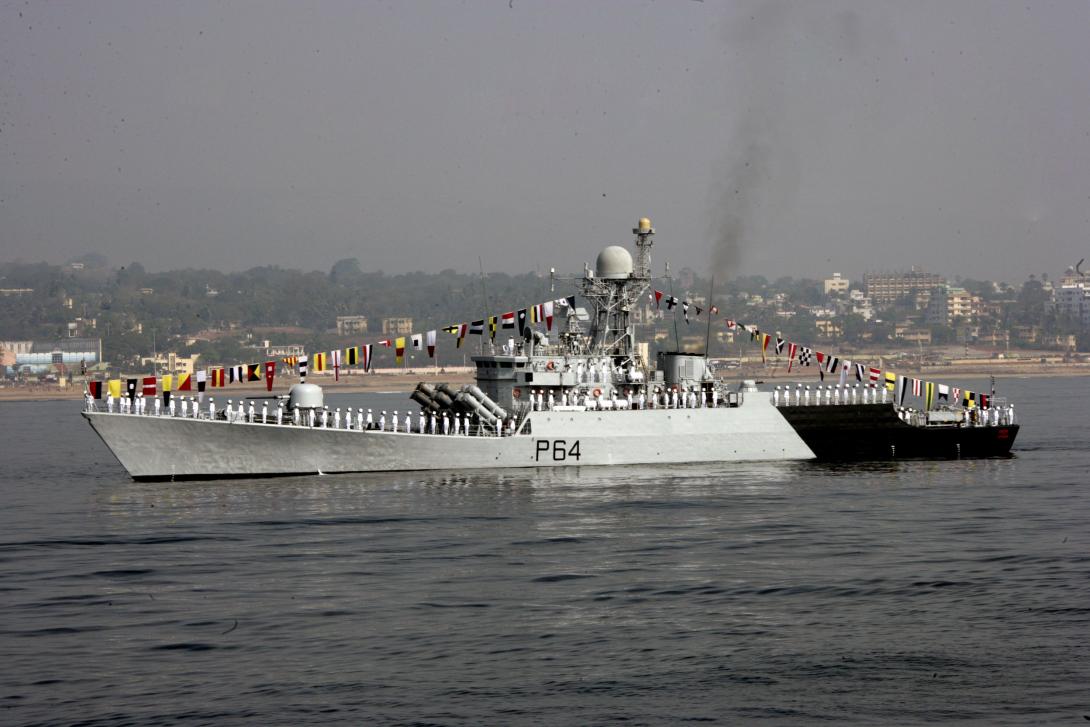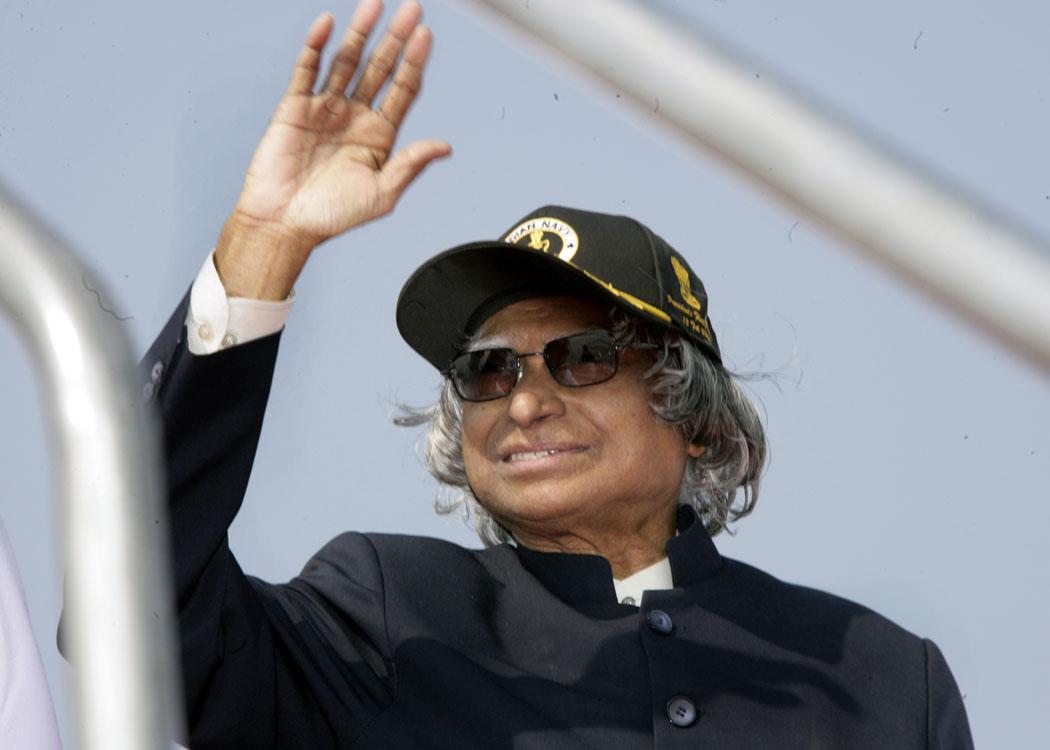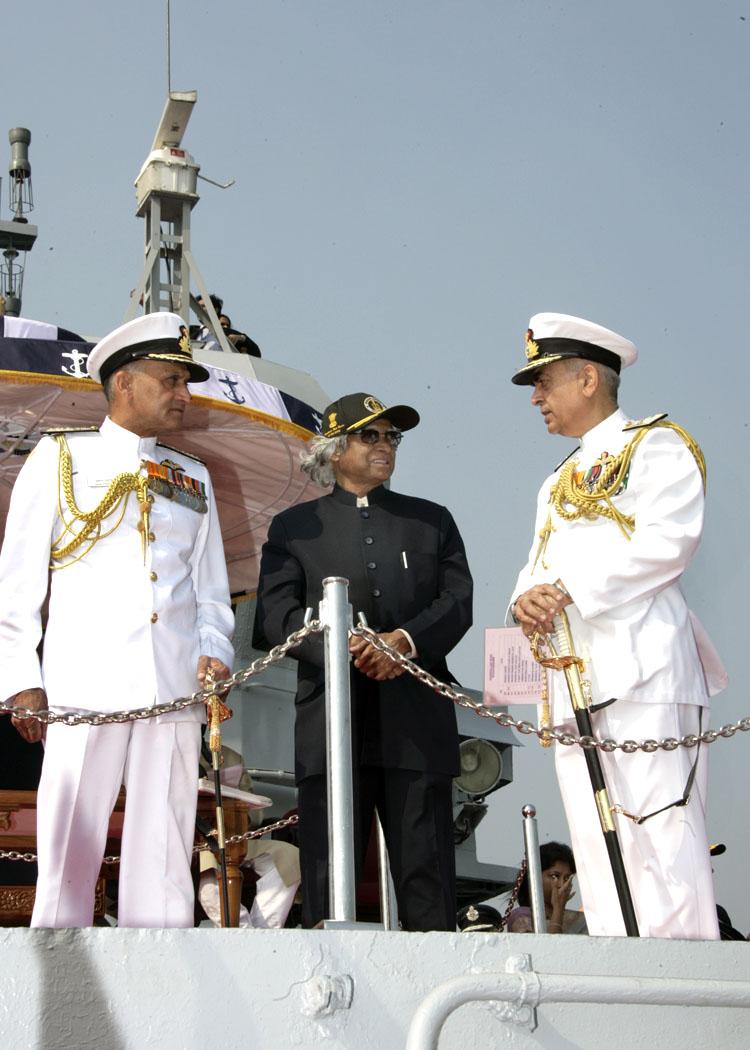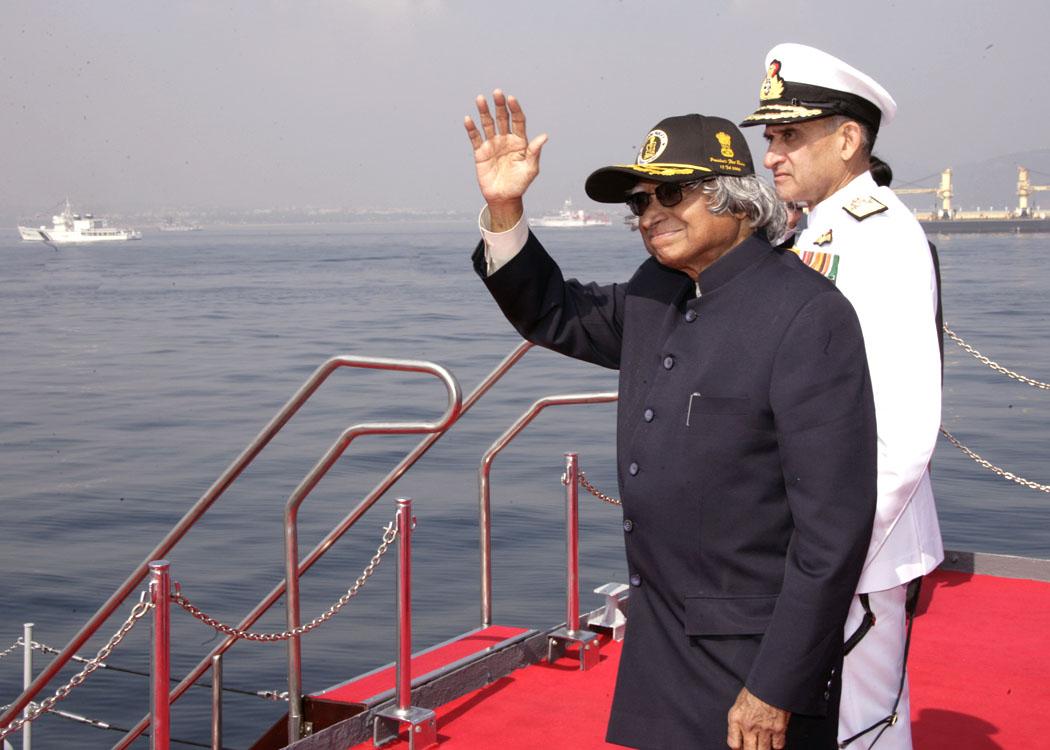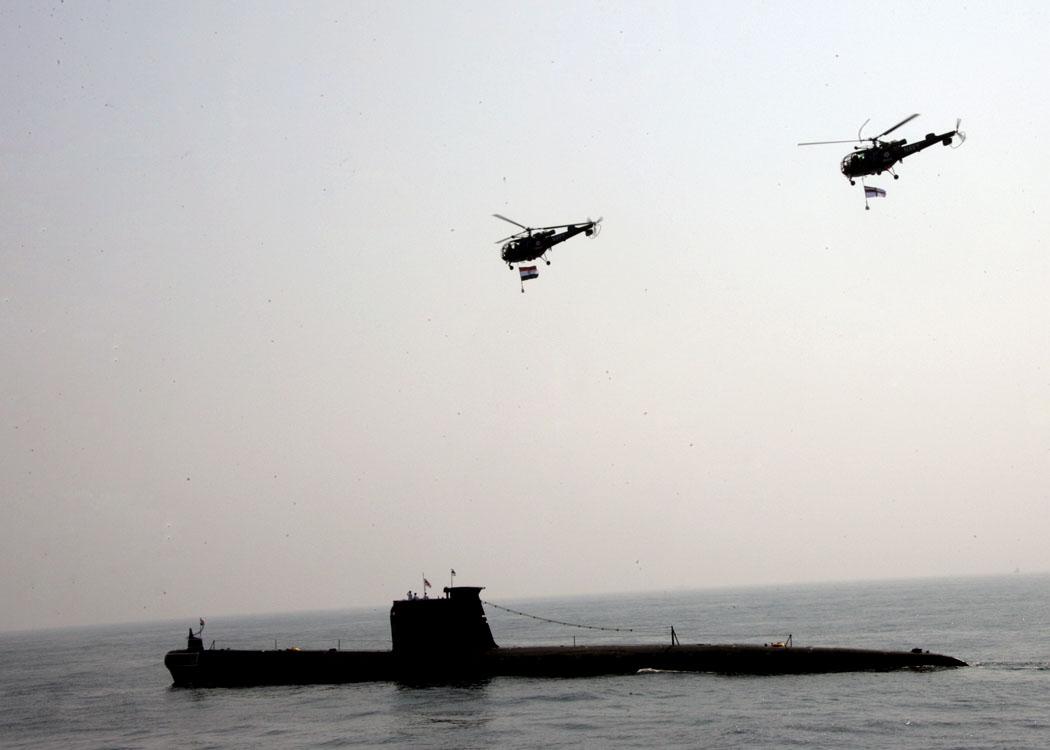Address At The Naval Fleet Review, Visakhapatnam
Visakhapatnam : 12-02-2006
The Ocean Power
I am delighted to participate in this Fleet Review of the Indian Navy which is being hosted by the Eastern Sea Board for the first time. My greetings to all the Officers, Sailors, and support staff of the Navy. May I greet the distinguished invitees and guests who are participating in this function.
When I am with you, I am reminded of the 1971 heroic action by the Eastern Naval Command. On the declaration of war on December 3, 1971, INS Rajput while patrolling detected presence of a submarine Coast off Vizag and she fired depth charges which grievously damaged PNS Gazi. It was a "prize trophy" for the Indian Navy. I am happy that the new INS Rajput has now become the first ship to have the most advanced supersonic cruise missile, BrahMos. I congratulate all ranks of the Navy for the heroic action and their foresight for modernization to maintain superiority in all future operations.
I also congratulate the laudable role played by the Navy by providing quick relief to the people affected by Tsunami in India and the neighboring countries.
Ocean - a National Treasure
As you are aware, oceans are extremely important for the social, political and economic development of a nation. Oceans possess living and non-living resources. Poly-metallic nodules in deep waters, placer deposits, heavy sands containing thorium, deposits of phosphorites and calcite etc., are few examples of non-living resources. Efforts are being made to locate hydrocarbon resources in deep waters. One of the important resources in the East and West Coasts is Methane Hydrate deposits, which are expected to be available at depth ranging from 400 ? 700 meters below the sea-bed. Seismic studies have shown high probability of existence of these deposits. At present there is a National Gas Hydrates Programme, which is working as an integrated mission to locate the Methane Hydrate deposits. It is a complex technological challenge as it involves high pressure technology transportation. In addition, nearly 40% of the world population lives in our region. The economic growth of this region depends on the heavy transportation in the Indian Ocean particularly the Malacca strait. Navy has an increasing role to provide necessary support for carrying out these operations.
Islands - our wealth
There are habited and large number of uninhabited islands of India in the Bay of Bengal and Arabian Sea. There is a need to continuously update our island boundaries and their dynamically changing contours. These islands can be characterized into three types: (1) Islands of strategic importance (2) Islands of economic importance and (3) Bio-diversity islands; and any combination of the above three. At this point, I would like to recall my personal experience.
A tiny island transforming into a missile launch complex
In October 1993, the development of Prithvi missile was almost over. However, the Army desired to have a confirmatory test, on a land range, to validate Circular Error Probability (CEP). Our efforts to conduct the tests in our desert range could not take off due to range safety problems. To overcome this, we were looking for an uninhabited island in the Eastern coast. On the hydrographic map supplied by Navy, we saw a few islands in the Bay of Bengal off Dhamra in the Orissa coast indicating that there were some landmass. DRDO range team hired a boat from Dhamra and went in search of the island. On the map these islands were marked as ?long wheeler?, ?coconut wheeler? and ?small wheeler?. The team carried a directional compass and proceeded on the journey. They lost their way and could not locate the Wheeler Island. Fortunately, they met few fishing boats and asked them for the route. The fisherman did not know about the Wheeler Island but they said there was an Island called ?Chandrachood?. They thought that this could be the Wheeler Island. They approximately gave the direction for proceeding to Chandrachood. With this help, the team could reach the Chandrachood Island, which was later confirmed as Small Wheeler Island.
On physical survey of the three Islands it was found that the long wheeler island had eroded over a period of time and was not useful for range activities. In view of this, we chose small wheeler, which had adequate width and length required for range operations. The team also found some signs of boats from other countries visiting the small wheeler island. A study of the hydrographic data, including remotely sensed satellite data, of number of years indicated the erosion characteristic of the island. After taking over the islands from the Orissa Government for range activities, we created permanent bunds on the periphery of the selected islands to prevent the future erosion. This one tiny island has transformed into a world class missile range complex. While this was being done, due importance was also given to protect the bio-diversity, particularly the protection and growth of Olive Ridley turtles popular in this region by plantation of trees on the coastal line and controlling the night time illumination. Hence, every island of ours needs periodical survey and based on this survey, we have to protect our islands.
Navy and its missions
I am delighted to know that the contribution of Navy has increased fourfold during the last 50 years in the area of surveillance and protection of our maritime assets. This has been achieved through the use of higher technology as force multipliers, State-of-the-art platforms, sensors, sophisticated weaponry, quieter and efficient systems on all the three dimensions namely underwater, surface and air.
Some of the notable achievements in shipping port and water-way development of the Navy includes charting of the deep water route in the Gulf of Kutch enabling movement of crude oil and other petroleum product vessels from multiple Indian ports. Also, you have contributed in the establishment of nine sea ports and many more you will contribute in the years to come.
The United Nations Convention on the Law of the Sea (UNCLOS) was enacted in 1994 and it was ratified by India in June 1995. This will result in the addition of 2 million square kilometers of sea area to our national jurisdiction in the form of Exclusive Economic Zone with full rights for economic exploitation. There is a need to frame rules for Governance and Regulations of the development activities within the maritime zones of India consistent with national security needs. We have to map our maritime zones with its living and non-living resources as a first step towards sustained economic development in the sea areas. Navy has to work with the Department of Ocean Development in evolving a national plan for implementing this economic development.
Accidents at sea could have devastating impact on the environment cutting across the national frontiers and national economy. Navigational safety at sea, therefore, calls for international co-operation for success. Hence, for protecting our territory and its surrounding environment we should ensure collection and dissemination of reliable data in our own sea areas and also our maritime neighborhood.
One major problem in the sea is the oil slick caused due to spillage from tankers and ship accidents. The slick can cause substantial damage to the living and non-living wealth of the seas. The Navy, through its surveillance system should determine the existence of slick on and under the surface. This information should be provided in real time to marine biologists for selecting and administering oil-eating or oil-degrading microbes having particular affinity for consuming hydrocarbon based products. This is essential for conserving the living and non-living resources of our seas.
Technological Performance
Technology in all its possible dimensions affects the sea warfare. The role of technology has often been summed up in a well known phrase: technology is a force multiplier. For example, the electronic warfare measures serves both as weapons as well as force multipliers. Because they result in manifold enhancement of the effectiveness of existing weapons. EW techniques can change the course of an orbiting man-made space satellite in such a way that it drifts from the pre-programmed space orbit, reenters the atmosphere and destroys itself. Similarly, the harnessing of guidance technology could enable destruction of a specified target with minimum number of missiles. The convergence of technologies could also be termed as Force Multiplication. In this direction, the Indian Navy should work in close cooperation with DRDO, Public and Private sector industries to get state-of-the-art indigenous stealth platforms, sensors like sonars, radars, high quality communication systems and precision weapons. Full advantage may be taken by using the services provided by OCEANSAT launched by the Department of Space for surveillance, harnessing and estimating ocean resources and environment. Navy had launched its indigenization programme in the mid-60s. The first warship built in India with design data from abroad was INS Nilgiri, it was commissioned June 1972. Since then there has been continuous ship building programme. I am happy to note that Government has decided to commence construction of underwater platforms. As a part of their long term modernization plan for submarine build up, I hope to see the future class of submarines to carry BrahMos and other vertically launched missiles. I am happy to note that Navy and DRDO have jointly built the capabilities for ship design, model testing and design validation.
Conclusion
The growing economic and strategic positioning of our country is of great importance to the national development. The whole range of activities on the coast such as oil exploration, increased cargo tonnage handled in various ports, the growing importance of the oil expressway, the increasing traffic in the vital sea lanes of communication through the Malacca Straits, are shifting the focus on the Naval Operations; these extend from low intensity operations and exercises to multi-faceted joint exercises and operations with foreign navies. The Sethusamudram Project would further extend the sphere of activities on the Eastern Sea Board. I am confident that the Indian Navy with its tradition of dedicated performance will provide the necessary assistance and security cover in the entire region and be a partner in our national development missions.
Just now I witnessed India?s sea power contributed by Indian Navy in high performance through its naval platforms with force multipliers. This gives me the confidence that the nation is assured of its maritime security. I would like to congratulate all the officers, sailors and the supporting staff. The nation is proud of you and I would like to assure you that the nation is with you in the modernization programme and the well being of its personnel. My best wishes to all the members of the Navy for success in their mission of safeguarding the maritime assets and boundaries of our nation.
May God bless you.

